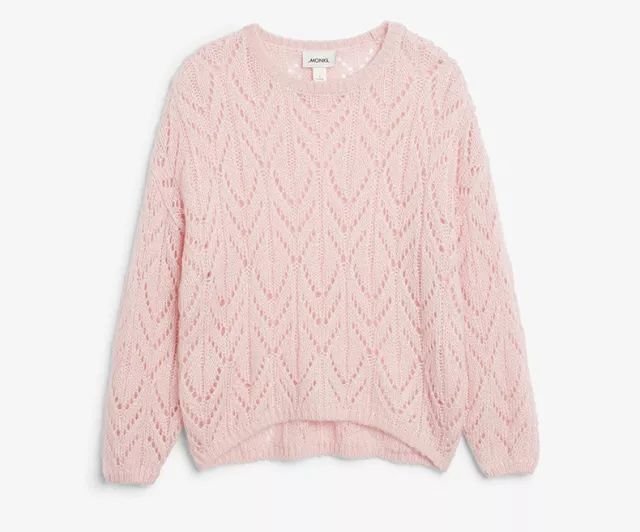As the title suggests, today’s post focuses on the fabrics of sweaters to help you make better choices when shopping. If you need to buy sweaters for yourself or your family, I believe this article will be helpful to you.
I will first introduce the general classification of sweater fabrics, their respective advantages and disadvantages, washing and care considerations, and finally give a summarized ranking. Let’s get started quickly
Table of Contents
classification
The main fabrics for sweaters are as follows:
Cashmere, Mohair, pure wool, blended (here refers to chemical fiber blended alone), pure chemical fiber, pure cotton
1. Cashmere
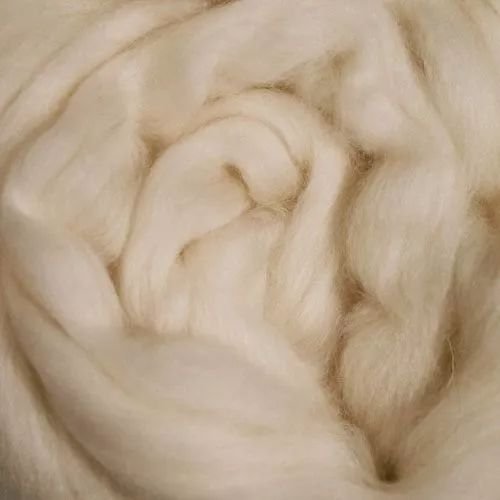
Q1: What is cashmere?
Some may not know, but wool comes from sheep while cashmere comes from goats. Cashmere is produced when goats shed their outer layers during colder temperatures during winter and rapidly sheds off when spring comes around.
Due to this feature, cashmere production per goat is extremely limited and costs more than fabric in terms of meters versus grams; hence cashmere sweaters tend to be more costly. One goat produces about 100 grams annually while a pure cashmere coat requires at least 30 goats’ worth of cashmere for production.

Q2: What are the advantages?
People often refer to cashmere simply as “cashmere”, however this term actually refers to Kashmir. Kashmir has long been recognized for producing high quality cashmere scarves which were once worn by Napoleon himself and presented as gifts to Empress Josephine – not because they’re expensive or scarce but due to its luxurious feel!
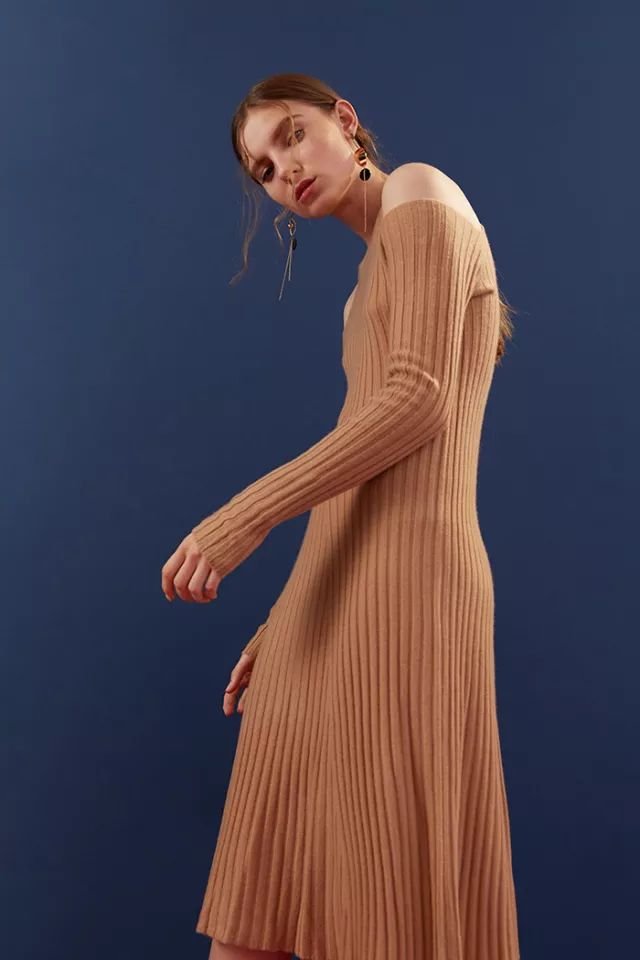
Cashmere is one of the thinnest animal fibers, and Albas cashmere’s fineness ranges between 13-15.5um; therefore cashmere clothing can feel light on your body.

Cashmere fibers feature a downy structure that creates an air layer between their fibers. This creates an unexpectedly warm fabric, often 1.5 to 2 times warmer than wool. If we were wearing two sweaters simultaneously it wouldn’t keep us as warm!
Cashmere fiber has many desirable characteristics, making it soft and smooth when worn; in particular, cashmere provides warmth while maintaining softness and coziness compared to ordinary knitted fabrics. Plus, cashmere has an exquisite luster and luxurious appearance which adds another level of high-end quality when worn.


Q3: Are there any drawbacks?
Actually, it’s more of a “trouble” than a “shortcoming”: besides the almost perfect wearing experience, cashmere is a little regrettable for its slightly expensive price and troublesome washing and care. Also, it needs to be taken care of carefully when wearing.
Nowadays, many coats do not have linings, and even if they do, the sweater inevitably rubs against the coat when worn, resulting in small balls on the outside of the arms and waist over time.
However, the degree of pilling is also related to the “purity” of the cashmere sweater. If the merchant cuts corners, then the pilling will be more serious. If it is really 100%, then pilling is rare
Q4: How to wash?
1. Cashmere sweaters must be carefully hand washed for proper care and maintenance.
2. After handwashing, place flat to dry to prevent deformation.
3. It is also essential that when drying, sunlight exposure be limited.
4.When it comes to storage, ensure you use clean bags or food storage bags as natural fabrics are often susceptible to insect infestation if left dirty. For best results, store in food-grade storage bags.
5. Don’t load too many clothes or quilts onto it at one time.
P.S. These washing points can be used for all the sweaters mentioned in today’s article
2. Mohair
Q1: What is Mohair?
Mohair (Turkish: MUKHYAR), in fact, refers to the hair on the body of the Angora goat, also known as Angora goat hair – “Angora” is named after the Turkish language, meaning “the best hair”. Mohair should be the favorite of most girls ~ It is fluffy and thick, and looks soft and warm visually. This characteristic is also related to its fiber structure
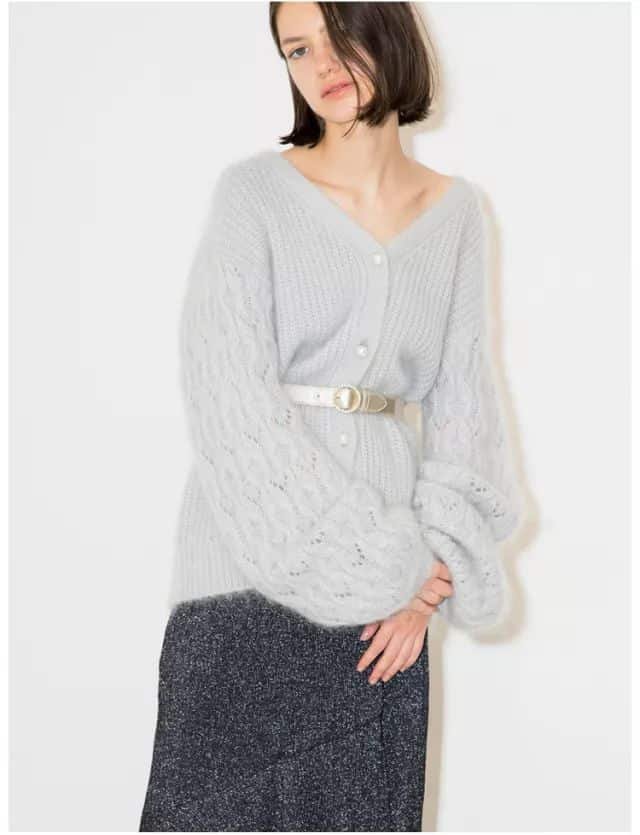
Snidel acrylic 36% wool 23% mohair 21% nylon 20%
Q2: What are the advantages?
The hair of Mohair is very long, some can reach one finger. Under the microscope, its hair scales are very “flat and wide” and rarely overlap, so generally pure Mohair sweaters are very “puffy” and not prone to knotting and shrinking.
In addition, it has high strength, good resilience, wear resistance, and dust and stain resistance – in other words, pure mohair sweaters are not prone to pilling, have good dyeing consistency, and are easy to clean.


Monki 90% acrylic 10% mohair
Q3: What are the disadvantages?
As previously said, mohair has many benefits; however, there may also be drawbacks.
First and foremost, most mohair sweaters on the market today contain chemical fibers in addition to mohair; this decision is often driven by cost considerations.
At present, Angora goats cannot be fully domesticated; they must only be raised in hilly terrain. Furthermore, only wool produced prior to age 8 meets textile industry standards for textile production.
So the price of pure mohair can be prohibitively expensive for businesses. One alternative may be to blend it with chemical fibers in order to lower costs; however, this creates the risk that pilling occurs more easily once combined together.
Mohair sweater wearers should be aware that their garment may cause hair loss and sticking, and so it is recommended to avoid wearing dark colored clothing under it.
Q4: Am I required to know anything specific about washing?
Ironing mohair sweaters is strictly prohibited and ironing a mohair sweater could result in serious consequences.
3. Wool
After talking about cashmere, velvet, and mohair, I will talk about wool, man-made fibers, and pure cotton, which make up 80% of the sweaters on the market. All of my friends have them in their closets, so I will talk about them briefly.
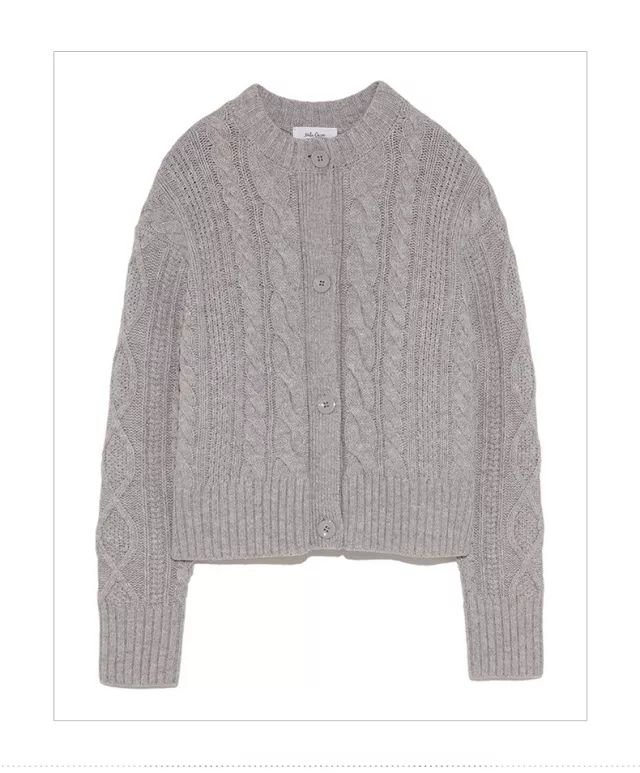
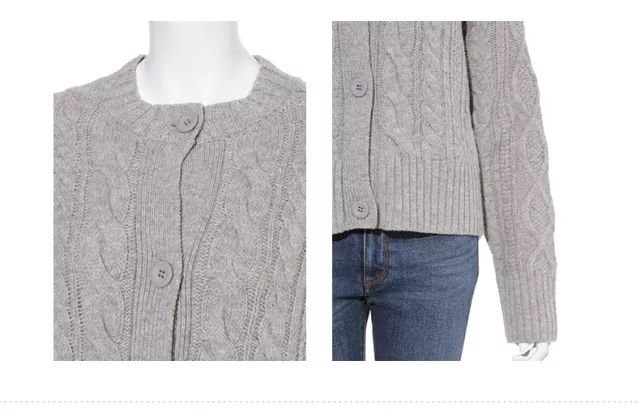
Mila Owen 100% Wool
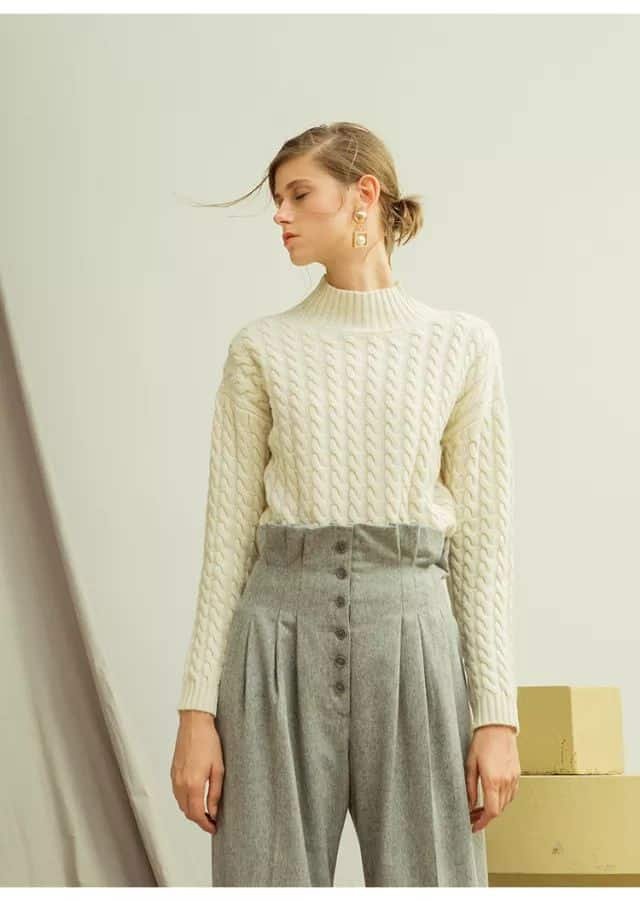
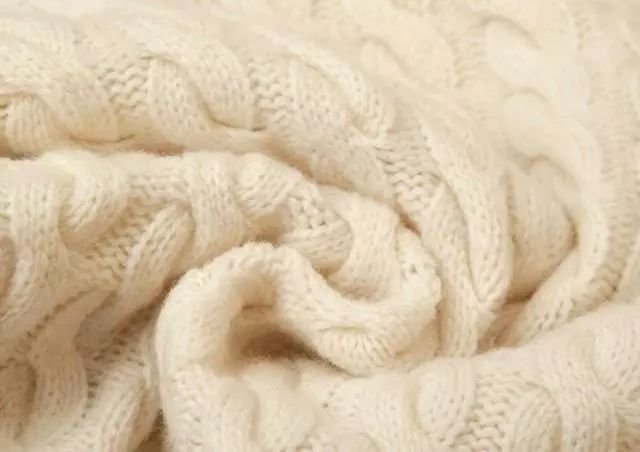
Cashmere and wool are synonymous. Wool is produced by sheep’s fleece. Wool products tend to have better pilling resistance than cashmere products and are practically pill free, though their felting shrinkage may vary significantly from cashmere’s.
4. Chemical fiber blends
While there are various blends, such as cashmere and wool or wool and cotton, wool and synthetic blends remain the most prevalent blends today. Just look at any store sweater’s washing label; chances are it’ll read “10% wool + 90% acrylic”. Thus when we speak of blends nowadays we also refer to synthetic mixes.
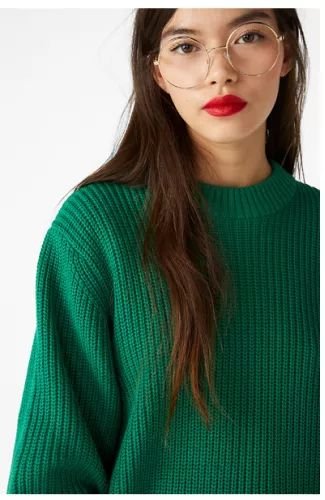
Compared to pure natural 100% fabrics, blended sweaters appear because of their low cost and cheap price. Moreover, because of the addition of chemical fiber components, they are very easy to color and have good color effects, making them attractive to look at. And compared to wool and pure cotton sweaters, blended with chemical fibers makes them more “sturdy” and less prone to deformation.
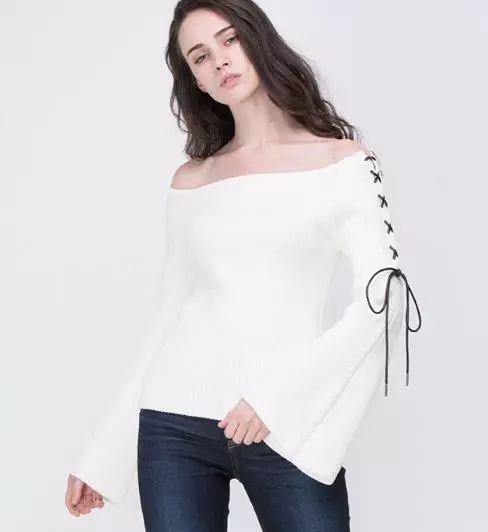

The disadvantages are also very obvious. First of all, the warmth effect is not good, and it is not soft and smooth. However, the most annoying thing about the bamboo sauce is that it is super easy to pill! Maybe it’s better if it contains high wool content, but if it only contains 10% wool, the pill can make you break downorz. If a sweater pillars badly, it will not look good at all.
5. Pure chemical fiber
Chemical fiber generally refers to chemical-refined man-made fibers such as acrylic, nylon, spandex, polyester, and nylon. Although pilling of chemical fiber blends can be very frustrating, pure chemical fibers do not pill at all.

In addition, it also has all the advantages of chemical fiber blends, and the price is even cheaper, so it has become the first choice for businesses to produce some “selling-look” styles for spring and autumn seasons.

However, Aungwinter still does not recommend buying or buying less pure chemical fiber clothes, as this type of fabric is prone to static electricity, so long-term wear (especially when worn next to the skin) is very bad for the skin. Coupled with its poor thermal insulation effect, it is even more recommended not to buy winter-style pure chemical fiber sweaters.

6. Pure cotton
If you have friends who want to buy pure polyester sweaters because of “affordable + no pilling + good-looking”, then I would recommend pure cotton sweaters to you. Because pure cotton sweaters also do not pill at all.
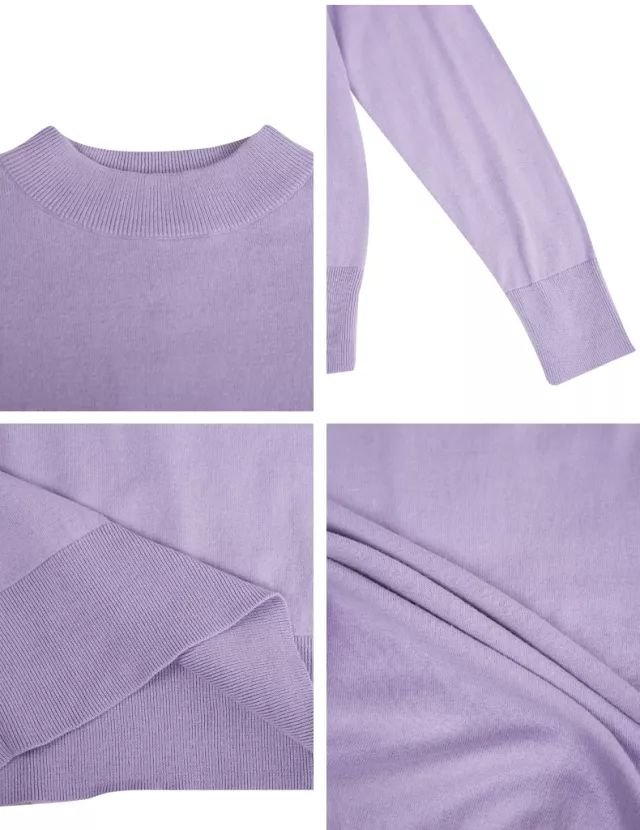
In addition, when woven with thick cotton yarn, the knitting texture of the clothes will be highlighted, so it is especially suitable for weaving patterns like “Fried Dough Twists”. However, due to the larger needle size, it is more breathable and has a mediocre insulation effect.
Based on the above characteristics, it is recommended to buy pure cotton sweaters for spring and autumn:
Does not pill – Not afraid to wear with hard fabric coats such as denim jacket and windbreaker
Poor warmth retention – not afraid of cold in spring and autumn
The knitted texture is obvious – it looks good to wear alone in spring and autumn
However, pure cotton sweaters are not long-lasting because they are particularly prone to deformation and fading, so they are basically not suitable for long-term wear. Of course, if you don’t mind, it’s ok to buy two pure cotton sweaters every season to wear. After all, they are inexpensive and beautiful
Summary
That’s all for the detailed introduction. There are actually many other fabrics for sweaters, such as alpaca wool and rabbit hair… I will introduce them to you slowly if I have the chance.
Aungwinter summarizes and ranks the above types according to several factors that are important when dressing.
Before the ranking, it should be said that the situation in reality is quite changeable. For example, when it comes to price, a big brand of pure polyester may be more expensive than a small brand of pure wool. Although it is a polyester blend, its process is very complex, so it naturally has reason to be more expensive than a pure wool piece.
1. Price (from high to low):
Cashmere-Mohair-Wool-Chemical fiber blend/Cotton-Pure chemical fiber
2. Thermal insulation (from high to low):
Cashmere-Mohair-Wool-Chemical fiber blend-Cotton-Pure chemical fiber
So it is recommended to buy basic pure-color cashmere sweaters;
Buy a cardigan made of mohair (with a light-colored shirt underneath);
Buy wool/blended fabrics with a sense of design/patterns;
If you want cheap and don’t want pilling, you can buy pure cotton in spring and autumn
3. Pilling degree (from no pilling to pilling):
Cotton – pure polyester – pure wool – pure cashmere – pure mohair – polyester blend
4. Degree of deformation (from not easy to easy):
Purified fiber-blended fiber-mohair-wool/cashmere-pure cotton
5. Degree of shrinkage (from not easy to easy):
Purified fiber – chemical fiber blended – pure cashmere – pure cotton – pure wool
Although pure wool and cotton are prone to shrinking, manufacturers generally calculate this in advance, so there is no need to deliberately buy a larger size. (Unless it’s from some bad sellers online). In addition, pure cashmere usually does not shrink, and if it encounters serious shrinkage, it is because the merchant is cutting corners.

